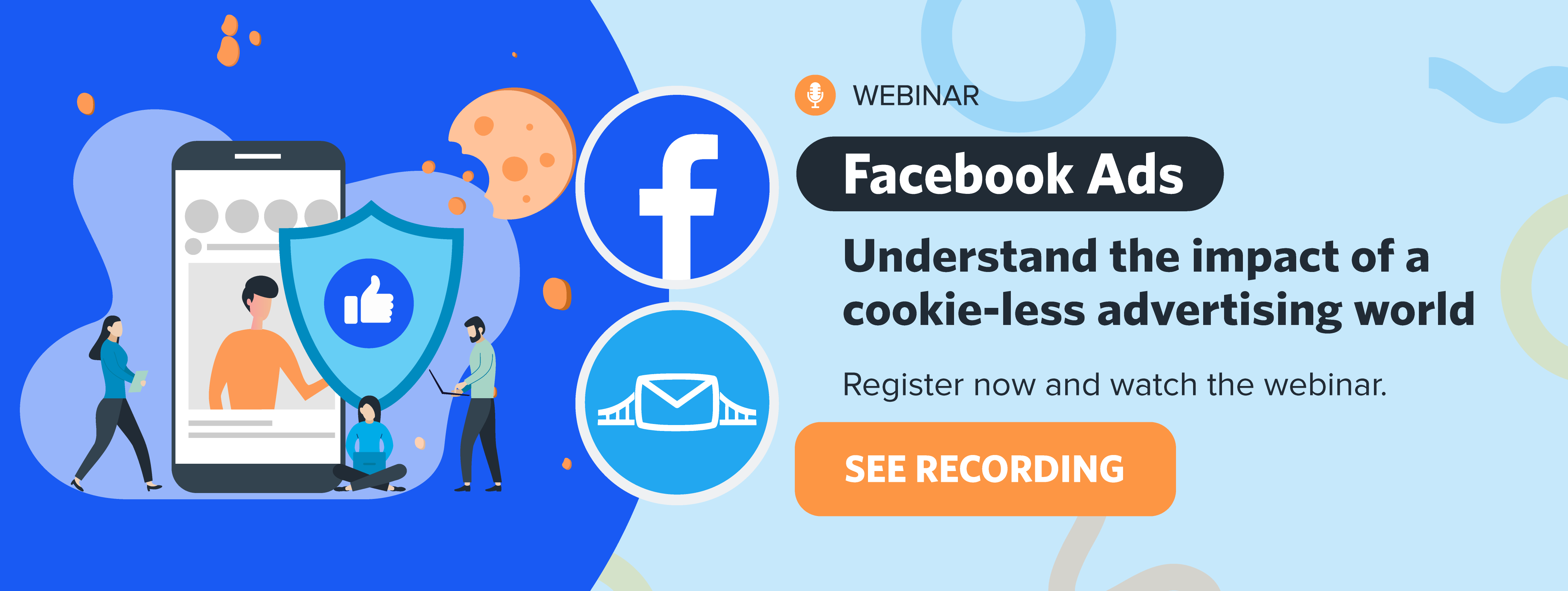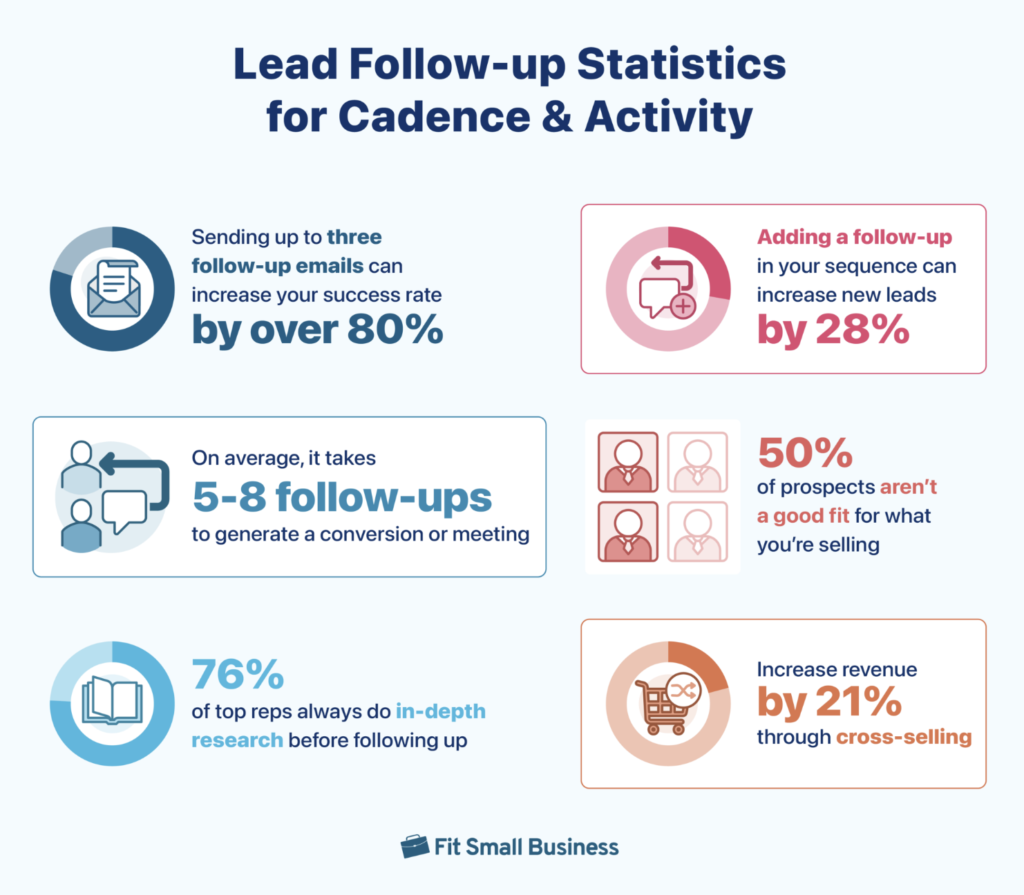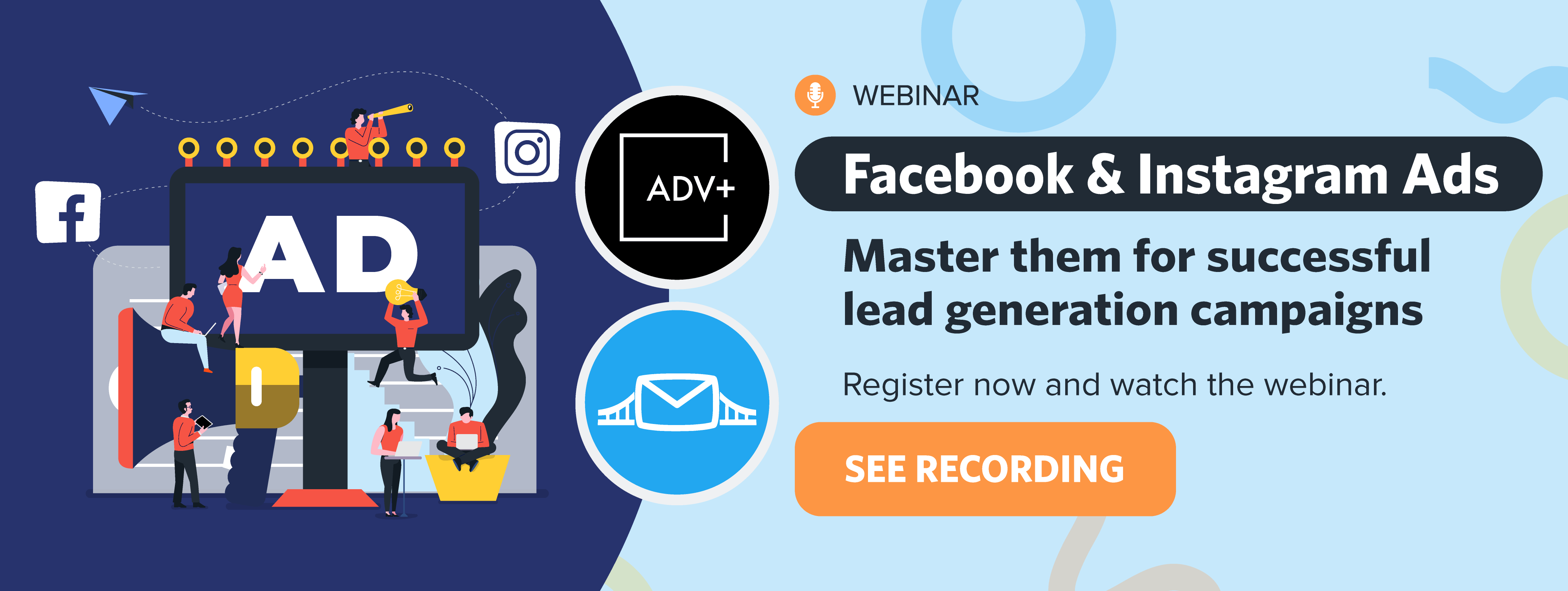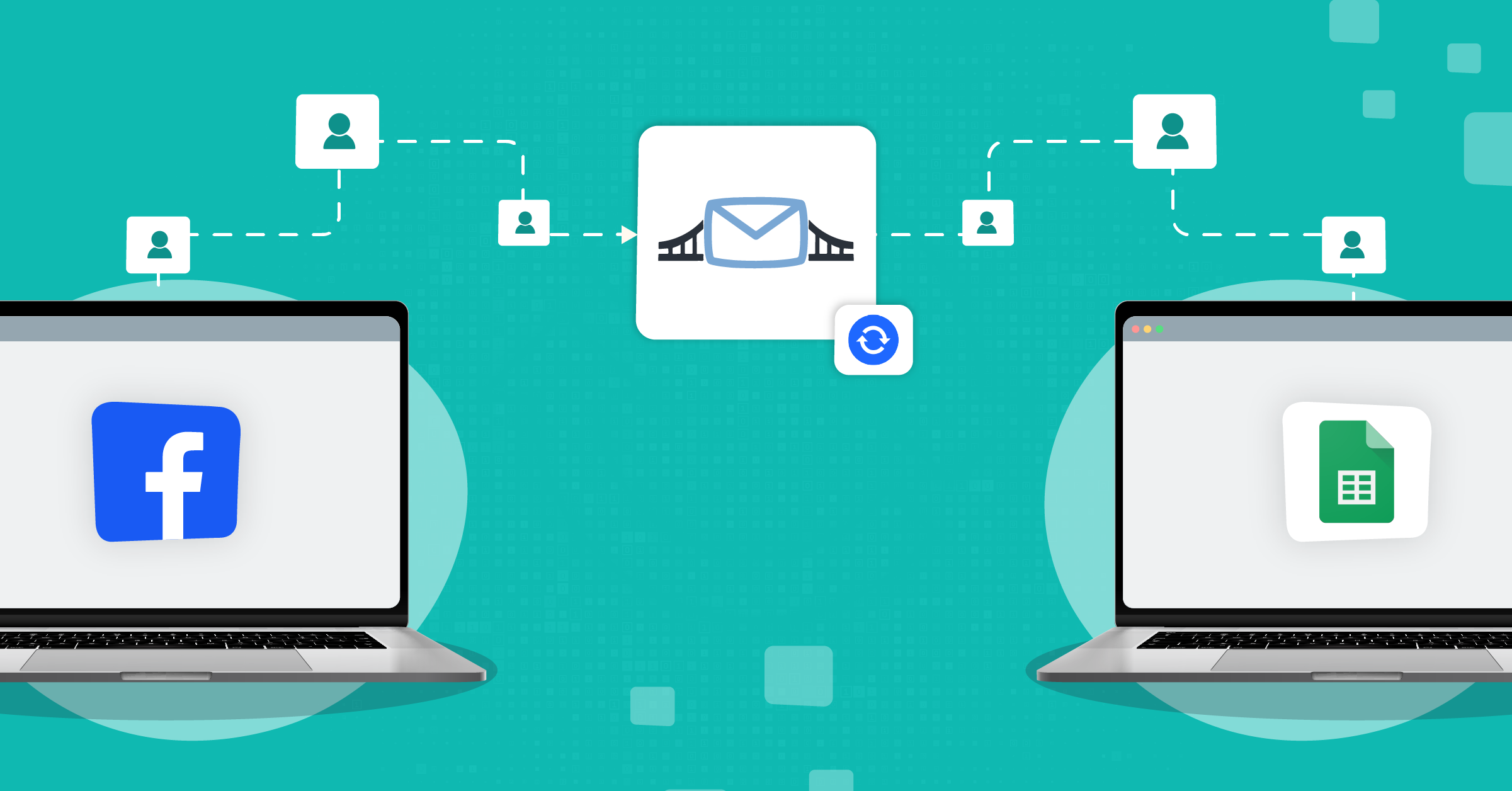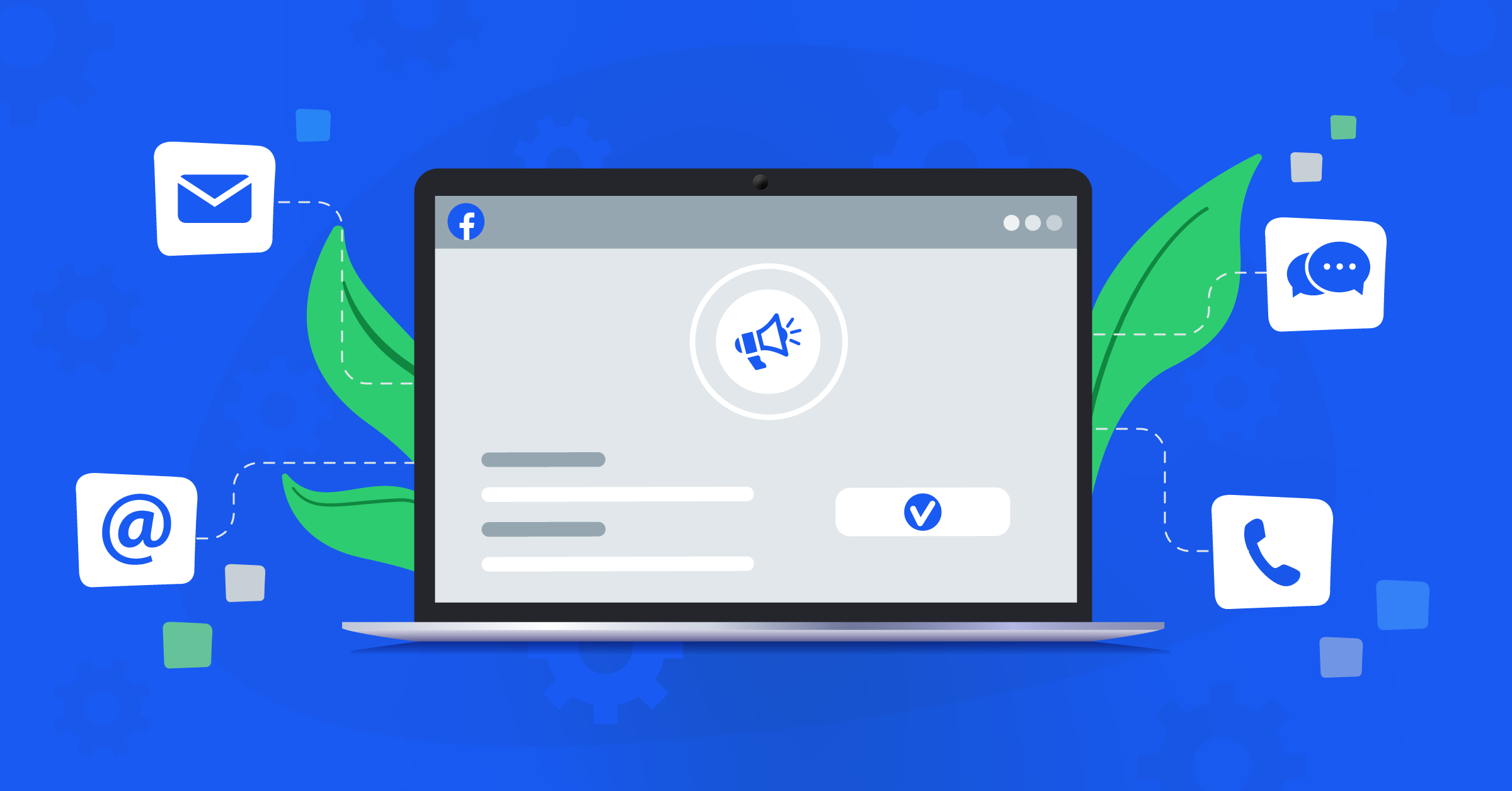
Meta makes it easy for businesses to generate leads through its lead ads tool. The average click-to-lead conversion rate for a lead ad campaign is much higher than regular conversion campaigns.
However, getting high conversion rates and generating leads is one thing; it is another to turn leads into customers. This is where following up with leads comes in.
- What are Facebook lead ads?
- How to follow up with Facebook leads
- How to send Facebook leads to email
- Strategies to improve the quality of leads
- How to respond to Facebook leads
- Lead follow-up best practices
- How many times should you follow up with a lead?
- Facebook lead follow-up email examples
- Reasons why you should integrate email and SMS with Facebook lead ads
- Final thoughts
Achieving a higher lead conversion requires quick response times. The idea is to get in touch with prospects as soon as they respond to your call to action, such as signing up for your offer.
Successful follow-up with Facebook leads, however, needs more than just having your email copy ready. We are living in an era of technology, and manual work in a digital space just isn’t going to cut it.
You’ll need to create an automated lead follow-up strategy and the right tool to connect lead ads to your CRM or marketing tool of choice. Automation can be done using third-party integrations provided by an official partner, like LeadsBridge.
In this article, we’ll discuss how to follow up with leads to boost conversions and customer engagement.
What are Facebook lead ads?
Lead ads are one of the most powerful advertising tools out there. These ads allow businesses to collect valuable details from prospects. To reduce user reluctance toward form completion, they were designed with a form that is already pre-filled with users’ information, such as their names, email addresses, and phone numbers.
Also, the entire interaction with the ad takes place on the platform. All users have to do is confirm their details and click the submit button.
Here is an example of a lead ad on Facebook.
Lead ads also allow you to collect business information, price estimates, sign-ups for newsletters, etc. It’s an easy way to generate new customers who are interested in your products or services.
When managing lead data manually, you’re responsible for every step—repeatedly. This involves accessing your Meta Ads Manager, downloading a CSV file containing your leads’ data, and then manually uploading it to your CRM.
This is a time-consuming process, prone to errors, and requires ongoing effort each time you gather new leads. On the other hand, automatic lead data management, through integrations, streamlines this process.
With an integration in place, new leads from your campaigns (like Facebook lead ads) are synced directly with your CRM in real-time. This means the data transfer happens automatically. This saves you time and ensures that no leads are missed or delayed.
Learn more about how to download leads from lead ads here.
How to follow up with Facebook leads
After downloading your leads, you will need to follow up with them immediately. You can use four different methods to ensure your leads receive proper attention at the right time.
To follow up with your leads in real-time, you need to have lead form notifications sent to your email as they come in, all without over-relying on manual data syncs.
You can achieve this ideal process using our integration that connects lead ads to Email Notification.
Besides conveniently putting your workflow on autopilot, you’ll maximize the investment and momentum from your lead ads. This way, your sales team will be able to act right away and close more deals.
Why is having a lead follow-up strategy important?
Creating a follow-up advertising system helps you win more sales with less effort. How do you do this? Simply by increasing your closing rate and customer satisfaction. Using a systematic process for your follow-up campaign gets the best out of your sales and marketing efforts.
So to get more sales, you need to implement your own follow-up system. Keep in mind that an effective advertising system for follow-ups should have these characteristics:
- It must be systematic: the follow-up process is completed the same way each time.
- It should generate regular and predictable outcomes.
- It requires little to no manual interaction to work correctly, meaning it should be able to run on autopilot.
Need more info? Request a demo to understand how LeadsBridge can streamline your Facebook Ad campaigns.
Lead follow-up systems
There are two types of lead follow-up systems, one for immediate follow-up and the other for nurturing your leads over a longer time.
Choosing your own system depends on factors such as the placement of leads in your sales funnel, your marketing strategy, and the next best action at every stage of the process.
Immediate lead follow-up system
1. Sending thank you and welcome emails: Immediately after a lead fills out your lead form or subscribes through other marketing channels, make sure to contact them with an email. For example, you’ll need integrations such as this to run your automated communications.
2. Making a call: Marketing calls boost ROI and customer satisfaction if used for the right occasion. After a call request has been submitted, 12 to 24 hours is an ideal time window to make the call. Here are some integrations for call center automation that can boost your marketing experience with lead ads.
3. Qualifying your lead: filter your leads or qualify them as they come in to give priority to hot leads and cut off the leads with no interest. On a wider scale, this practice is called scoring: familiarize yourself with a lead scoring strategy here.
4. Organizing a follow-up call: To guide your leads down the sales funnel and help them with decision fatigue, your only tool is communication. However, you’ll need to choose the right medium. It could be demos, appointments, or calls to provide the info they are looking for at that moment.
5. Sending thank-you SMS or email messages: A report by Hubspot showed that thank-you emails get a remarkable 42% open rate and an impressive 14% click-through rate (outperforming many other email categories).
Why? Because users care that you care. With a simple email, you can finalize a conversion, and set the ground for customer retention rates and even upsells.
6. Sending reminders about the follow-up appointment: Reminders matter! So much so that platforms like Meta are making it an advertising feature (a.k.a. Reminders Ads). Create a sequence for them, whether they’re for an upcoming event, webinar, or simple client-customer care appointment.
7. Following up: Most sales don’t happen on the first try. It takes consistency, patience, and genuine follow-up to build trust and close the deal. Yet many people give up too soon and miss out on opportunities. Staying in touch makes all the difference.
In addition to persuasion, you can use them to conclude with a sales pitch, a call to action, or a survey request that can drive conversions.
8. Organizing lead lists for long-term follow-up: If a group of your leads isn’t ready, giving them a little more time could help. Later, you can use their data to qualify them for follow-ups, personalized messages, etc. Let’s take a look at how you can do this:
Long-term lead follow-up system
- Focus on the benefits of following up: Customize your pitches for each lead strategically, offering value through tailored messages, such as birthday greetings, pain point solutions, or holiday season re-engagement.
- Give hard sales a shot: Make forthright contact with your leads for your service-based business or larger ticket items. Personalized contacts are a great way to approach this.
- Make it personal: Personalization is a powerful marketing technique. Discover more about behavioral marketing and personalization.
- Request referrals: Referrals are high-converting leads. If your leads are really interested in your product but not ready to buy, ask them for referrals.
- Remove prospects who do not consent: Any lead who no longer wishes to receive your marketing messages should be removed. You can close your conversation with them by sending a thank-you note and your farewell message. This is important if you want to keep your advertising safe and compliant.
Permission-based marketing is the way to go nowadays. Learn all about it.
How to send Facebook leads to email
Why use automation with your Facebook account to send Facebook leads to email directly?
Mostly because it provides the ground for sending a quick response to a lead who has just converted (through signup, download, purchase, etc). This is called speed to lead and matters because leads expect to hear from you quickly. Keep them waiting, and you could outright lose them.
There are two ways to email your Facebook leads:
1. Setting up welcome email campaigns
Welcome emails boast an impressive 68.6% open rate. They also perform 4 times better in opens and 5 times better in click-throughs compared to standard email marketing campaigns.
By integrating your Facebook account with LeadsBridge’s welcome email, you can instantly send a welcome message when a new lead comes in.
Statistics show that real-time welcome emails have the highest open rate (91.43%) and an average click-through rate of 26.9%. So, integrating your leads with welcome email through LeadsBridge can change your entire lead management game for the better.
2. Setting up automated Email Notification alerts
Another way to send Facebook leads to email is through LeadsBridge’s Email Notification tool. When you integrate the tool with your Facebook account, it sends an email to you or your sales rep with the details of the lead as soon as they sign up on your lead ads.
Thanks to LeadsBridge’s Facebook- Email integrations, you can receive email notifications to guarantee successful lead management from the top of your funnel.
This lets you automate the process for your Facebook campaigns and deliver higher success rates by turning prospects into paying clients, all at zero costs.
Discover the step-by-step instructions to send Facebook leads to Email here.

With Email Notification integration, you can keep communication with your leads constant. Besides, it offers a non-intrusive way to deliver relevant messages and offers such as coupon codes, rewards, and special notifications.
Learn all you need to know about how to receive Facebook leads’ email notifications for instant follow-up here.
How to send SMS to Facebook leads
SMS marketing is growing fast, with the industry expected to hit $12.6 billion by 2025. More businesses are turning to text messages as a simple way to connect with their audience, with an open rate of 98%. SMS communication also has the upper hand when compared to the email open rate, which is 21.33%.
Integrating Facebook lead ads with SMS tools:
SMS automation allows you to communicate with your leads through text messages. Since most people use smartphones, it is unlikely that SMS alerts go unnoticed.
Using a Facebook lead ads SMS tool integration, you can define automated triggers that send text messages to your leads as well as your marketing team or sales reps to inform them about an important activity (like when a new lead signs up on the lead ads).
This way, an appropriate response can be provided to your leads who have interacted with your ads (new signups, conversions, requesting demos, etc).
In addition, you can decide whether to send an SMS to one of your sales agents at a time, to all the agents simultaneously, or to all your sales reps with a round-robin.
Here are some popular SMS marketing-boosting integrations.
Strategies to improve the quality of leads
Ask more qualifying questions
Facebook lets you add your own qualifying questions to your lead ads. The general idea is that the more questions you ask, the more qualified leads you’ll get. This helps you weed out low-intent users who are not likely to convert.
However, asking too many questions also has its own costs. Since many people may be unwilling to submit the form because of the time-consuming process, this strategy naturally yields fewer leads.
On the other hand, Facebook auto-populates shorter forms, so it becomes easy for users to complete the process. As a result, it generates a higher number of leads.
So, to get a maximum number of quality leads, ask relevant questions and make it easy by offering the answers in multiple-choice options. This will encourage them to get through the form without wishing to abandon it midway.
Use an automated lead follow-up system
The most effective approach is to follow up with leads as soon as they sign up for your lead ad. Using an automated lead follow-up system makes matters even more effective.
A study revealed that 35-50% of new sales go to the business that responds first. With an automated lead follow-up system, you can quickly contact leads with relevant information before they lose interest in your offer.
Create a series of welcome emails
Sending a single welcome email when your lead signs up is great, but you need to continue the communication between your brand and your leads. The best way to do this is by creating a series of emails designed to keep leads engaged (also known as “lead nurturing”).
Read this guide to learn more about developing the follow-up email sequence.
Most businesses create a series of six or seven emails:
Start by welcoming them to your business, offering practical advice, providing a solution to their problem, and positioning your service or product as a solution. You can use these integrations to drive more results:
Discover the step-by-step guide to connecting lead ads to Klaviyo through LeadsBridge.
Create lookalikes from real customers
In practice, lookalike audiences are replicas of your ideal customers. Remember, creating a lookalike audience from prospects is not as useful, since it just piles up a bigger list with less qualified leads. Instead, create a lookalike audience from those who have already converted to customers.
This approach lets you build a more actual profile of an ideal customer. A true profile steers your campaigns clear of unqualified (low-intent) leads. In addition, you can always be sure to hit the target each time you create a Facebook ad campaign for the lookalike audience.
Discover our most popular integrations for streamlining these campaigns.
Segment your leads
Segmenting your leads makes your lead follow-up strategy more effective. This involves grouping your contacts according to different traits, such as their income, purchasing ability, and position in the sales funnel.
This information also helps you craft better-personalized messages that resonate with them and serve their needs. Here is an interesting statistic: personalized emails are 44.3% more likely to get opened.
Use a multi-channel strategy to follow up with leads
Email is not the only way to follow up with leads. You can use other channels to run follow-up campaigns, such as phone, SMS, instant messaging, social media, and video calling.
Many organizations set up an enterprise phone system that works entirely on VoIP service technology. Even if a call is missed, you can get back to them at a very nominal cost since all the calls are placed over the Internet.
Giving leads different options to contact you helps them choose the most convenient way. On average, 90% of texts are opened within three minutes.
Share your best content
The resources you have on your website, such as blog posts, video content, and images, can support your follow-up campaigns. Of course, you should consider the content that best portrays the features and benefits of your products or services.
Educating your leads on how your product or service works is always a winning strategy. You win by getting them to engage with your products or services, and they by receiving value (such as information or solving an issue).
Generally, 80% of business decision-makers prefer learning about a company through articles versus an advertisement.
Meta Conversions API and cookieless advertising
The lead ads’ data you have collected so far include a massive amount of information. This data is technically a gold mine from a marketing perspective.
But with so many new rules and regulations on user privacy, you may want to take a deeper look at its impact on cookieless advertising.
Advertisers used to rely on third-party cookies to accurately target and retarget their audiences. But not anymore! And while the cookieless world may seem challenging, it has a silver lining to it.
Cookieless marketing creates a more genuine ground for business-consumer communications while adding more value to marketing efforts.
The best practice for handling cookieless tracking is combining LeadsBridge and Meta Conversions API. It allows you to automate the process, transfer data, and stay ahead of your competition by getting a badge of authenticity.
To learn more about the best practices and solutions for advertising in a cookieless world, read our guide to cookieless tracking.
How to respond to Facebook leads
Once you’ve set up your lead ads, information about your leads will start rolling in. But if you want your lead ads campaign to be a success, you need to know how to respond to Facebook leads, in order to make the best of them.
Here are a few best practices to help you properly respond to leads.
Run lead ads at a time when you are able to connect
In order to follow up with leads immediately, you can schedule your lead ads campaigns to run only during your business hours. This way, you are prepared to quickly start a conversation with your prospects right after they’ve shared their information.
Connect when it’s most convenient for your leads
You can use the custom questions or the Appointment Request question in your lead ads instant form to find out when is the best time to reach your prospects, and how.
In order to help improve your customer experience and conversion rate, try to reach out (when it’s most convenient) to your leads. Personalizing the communication according to their specific needs will definitely make a difference.
Use an autoresponder
The best way to make sure you’re always getting back to your leads in a timely manner, right when their intent is the highest, is by using an autoresponder.
In case you’re not familiar with this term, an autoresponder is software that automatically sends pre-written emails or messages to a lead in response to a specific trigger. Triggering actions can be, for example:
- Signing up for a newsletter
- Completing an online purchase
- Abandoning the shopping cart
- Not interacting for a certain period of time
- Registering for an event
Autoresponders help you provide timely and relevant content to your mailing list, which can lead to increased open and click-through rates. Moreover, you can use these tools to build and maintain strong relationships with customers by providing consistent and personalized communication.
Here are our most popular integrations between lead ads and the best autoresponders on the market.
Lead follow-up best practices
When running lead generation campaigns that click to Messenger, you can qualify leads with automated questions. Then, you are also able to continue the conversation in Messenger to drive business results.
Here are some of the top lead follow-up best practices you can use for responding to leads effectively:
1. Run ads only when you are able to respond to your incoming leads quickly.
Schedule your ads to run when you or your live agents are available. Or if you already have an automated lead nurturing system in place. This way, you can respond to leads immediately after they share their information.
Here’s more on how to automate your email marketing workflow.
2. Set clear objectives and communicate them to your leads.
At the end of your automated flow, let people know what to expect next. For example, tell them when an agent will contact them or what your business hours are.
3. Use the ability to converse with your leads in Messenger.
Responding fast in the same channel can improve your lead quality. Besides, this creates a positive experience and can increase conversion rates as well. Messaging lets people reply at their convenience, while allowing you to learn their preferred contact times (and methods).
4. Use automation to streamline your business processes.
Using an integrated CRM lets you receive leads automatically, instead of downloading them manually. You can consider using a third-party provider like LeadsBridge to automate your communications and manage all customer inquiries across different channels, in one place.
Discover all the marketing automation for small businesses here.
How many times should you follow up with a lead?
Alright, let’s get to the heart of it. How many times should you actually follow up with a lead?
The sweet spot is usually somewhere between 3 to 6 times over a couple of weeks. This gives you enough chances to stay top-of-mind without coming off as intrusive.
Most people won’t say “yes” on the first or second try. But by the third or fourth follow-up, they start paying attention. The fifth attempt is where they might be ready to engage with you seriously.
And if you stop too soon, you might miss out on the conversion you’ve worked for so hard!
Here are some quick tips you can use for following up with your leads:
- Reach out within 24 hours of initial contact to stay fresh in their mind.
- Use a combination of channels: email, phone, social media, or even text.
- Respect their time with clear, concise messages.
- Share helpful info or a solution in each follow-up, not just a sales pitch.
- Give them space between follow-ups (2-3 days works well).
- Keep your tone friendly and upbeat, even if they haven’t responded yet.
- If there’s no response after 6 follow-ups, it’s time to let go (for now).
Lead follow up statistics in 2025
Studies show that only 2% of sales happen during the first contact, while a staggering 80% are closed between the 5th and 12th follow-up.
Despite this, 44% of sales reps give up after just one attempt. Consistent follow-up is often the key to turning leads into loyal customers. Here are some more interesting lead follow up statistics to know in 2025:
Facebook lead follow-up email examples
While they are often put under the same umbrella, email nurturing and follow-ups differ in strategy and purpose; lead nurturing is about relationship building over time, while follow-up is about prompting immediate action.
Lead nurturing emails are designed to build relationships with potential customers. They provide valuable information and maintain engagement over time. You can also use them to educate the recipient about your brand or product.
Follow-up emails, on the other hand, are more direct and immediate. Usually, they are sent right after a specific user interaction. It could be a purchase inquiry, event attendance, or a download from your site. Their purpose is to provoke/encourage a response or action, such as finalizing a purchase or providing feedback.
With that in mind, let’s take a look at a couple of Facebook lead follow-up email examples.
Privyr
Below, you can see a follow-up email from Privyr, sent after the user interacted with their ad on Facebook. But let’s take a look at the ad first.
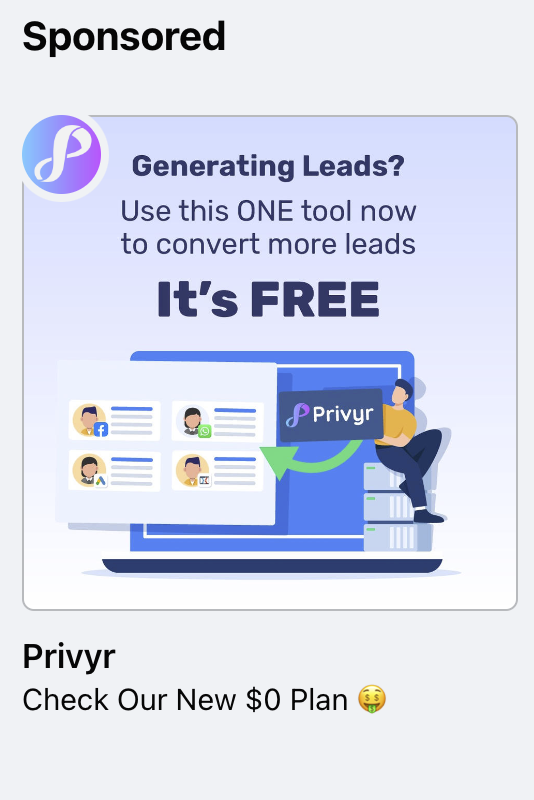
This ad directly aims for sign-ups for their free plan. Accordingly, the follow-up email’s copy is in harmony with the campaign: how to use and get the most out of their platform under the free tier.

Just like other effective Facebook lead follow-up email examples, this ad is to the point, meeting the users’ expectations of why they interacted with the ad in the first place.
ClickFunnels
The next Facebook Ad example is from ClickFunnels, explaining what the platform does and who it is for:
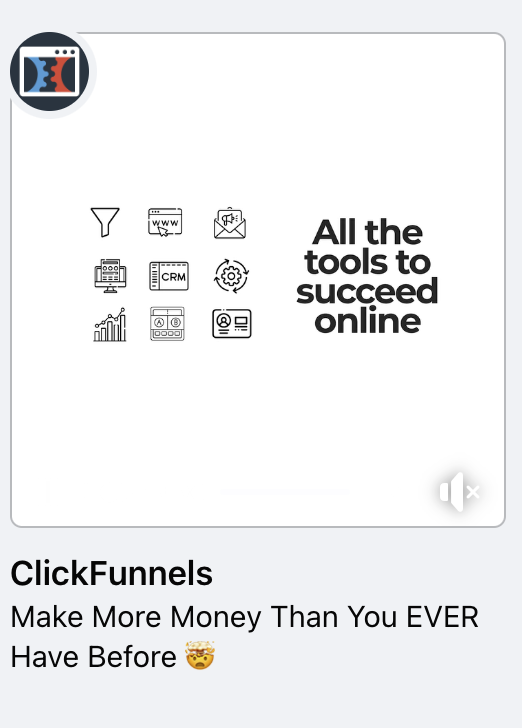
In this case, the user interacted with their ad but did not complete the registration. The follow-up uses quite an interesting approach. Instead of a simple reminder, they use a FOMO approach accompanied by a newcomers’ discount to push the recipient (Facebook lead) down the funnel.
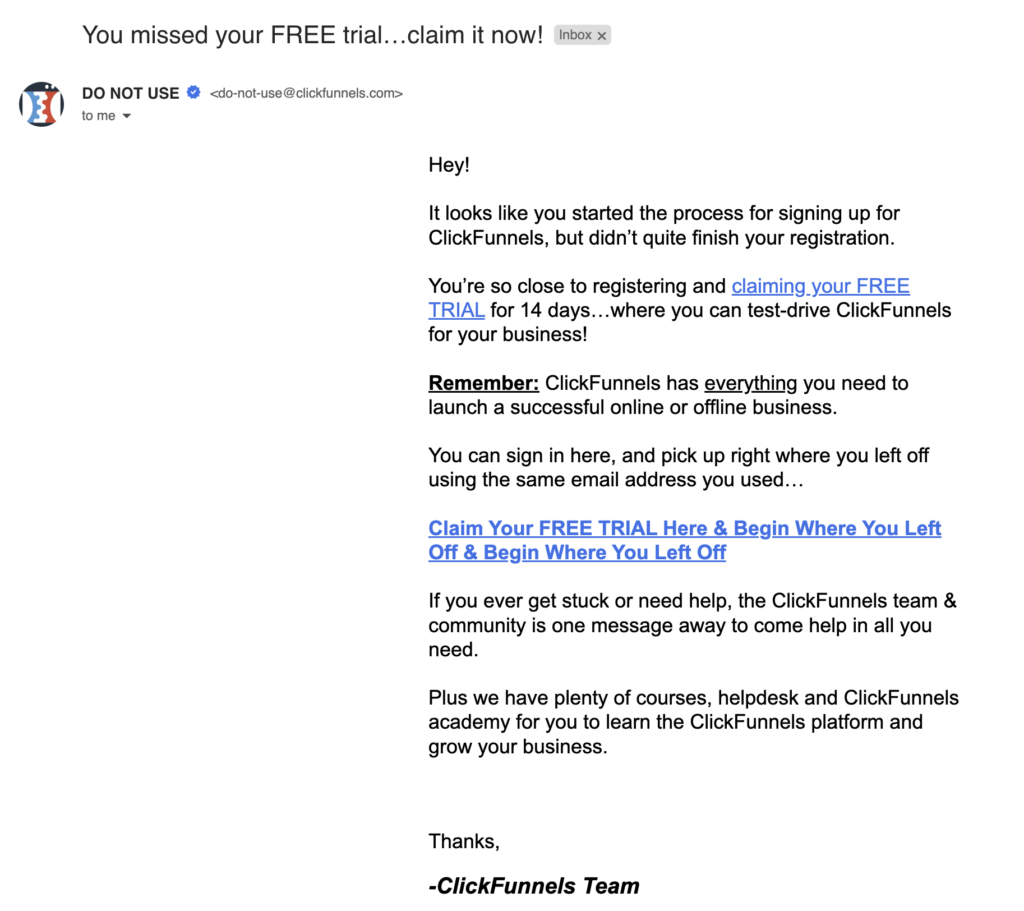
An already interested user could easily heed their encouragement and finish the registration process.
Reasons why you should integrate email and SMS with Facebook lead ads
The marketing world is dynamic, constantly becoming more sophisticated. Customers receive marketing messages through different channels such as email and SMS. This means your marketing approach must be creative and resourceful to stand a chance.
For instance, it is possible to combine email messages, SMS, and Facebook lead ads and blow your competition away. You can also request users’ email addresses and phone numbers while creating your Facebook lead ads to use them for marketing purposes.
Below, you’ll find the top three reasons to integrate SMS and email with lead ads.
1. Produce more conversions. Using Facebook lead ads and emails can generate customers who are 22% more likely to purchase your product or service.

On the other hand, SMS has an open rate of 94%. This makes it a good marketing combination and represents an ideal chance to increase conversions.
2. Grow your audience: Use Facebook to grow your mailing list, your SMS marketing subscribers list, and email marketing list. You can also get more Facebook followers and engage your audience using email or SMS marketing.
Discover how to build your email list on Facebook and Instagram.
3. Provide options for your subscribers to interact with your brand: Using email and SMS with Facebook lead ads allows subscribers to choose the channel they prefer for interaction with your brand. This way, it becomes easy to build a base of more engaged customers.
Final thoughts
Facebook lead ads allow businesses to grow their lead databases and drive conversions. However, the challenge lies in how to effectively follow up with Facebook leads. It calls for creating a lead follow-up strategy so the leads can convert to customers.
Having a winning follow-up strategy gives you an advantage over the competition. An important aspect of following up with leads is timing; the sooner you get in touch, the better the results. This way, you can nurture them until they convert.
To follow up immediately, automate the process by integrating with a Meta Business Partner such as LeadsBridge so you can funnel the leads straight to your CRM or Autoresponder and start communicating with them right away.
There are other tools that streamline follow-ups, such as the Welcome Email, Email Notification, Welcome SMS, and SMS Notification. However, you can only use them well if they are connected to other points in your marketing stack, which you can do by creating bridges through LeadsBridge.
Learn all you need to know about the best Facebook lead ads integrations to boost your lead nurturing campaigns.
Additionally, check out all the possible integrations with Facebook lead ads.



























